Beauty News, ViVANI
Cocoa – The New Gold?
As we move through 2024, the cocoa industry is facing an unprecedented crisis, with cocoa prices soaring to levels never seen before. This situation has been developing since late 2023 and now poses significant challenges for chocolate production globally. This blog post will explore the deep-rooted causes of this crisis, its broader impacts, and what future developments we might expect.
Historical Context and Current Crisis
The world’s dependency on cocoa from Ivory Coast and Ghana, which jointly produce over 60% of global supplies, has always posed a risk. Late in 2023, these major cocoa-producing nations began experiencing severe agricultural setbacks due to excessive rainfall that led to widespread rot and fungal infections in cocoa crops. As we entered 2024, these initial problems have escalated into a full-blown crisis with cocoa prices reaching a historic high of $10,990 per ton as of April 30, 2024—a staggering 367% increase from the previous year.
Climate Change: A Persistent Threat
Climate change is a relentless force impacting cocoa production, particularly in the equatorial belt where all cocoa trees grow. The regions around the equator are experiencing increasing temperatures and reduced water availability, which are detrimental to the cocoa trees that thrive under specific climatic conditions. Our previous discussions in “The Cocoa Tree – A Tropical Diva” delve into the delicate nature of these plants and their specific environmental needs.
The Role of El Niño
The El Niño phenomenon, characterized by significant changes in the Pacific Ocean’s temperature, exacerbates weather irregularities globally. Its effects have been particularly severe in Latin America, a key region for cocoa cultivation. The resulting weather extremes, from droughts to storms, have devastated many cocoa plantations, further straining global cocoa supplies.
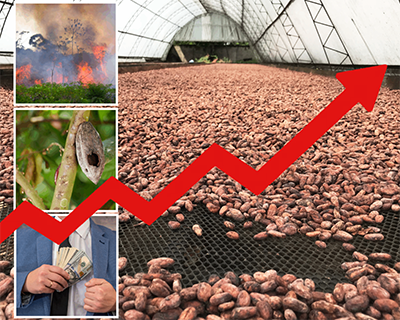
Monoculture Farming’s Downfall
The crisis is also a stark reminder of the dangers of monoculture farming, which, while efficient, leads to biodiversity loss and soil degradation. In 2023, the heavy rains in Ghana and Ivory Coast vividly demonstrated how such agricultural practices leave cocoa crops vulnerable to disease and climate events. The devastation from these weather events has shown just how fragile these farming systems are under stress.
Ghana’s Escalating Problems
In Ghana, the crisis is compounded by illegal gold mining activities, which reduce the available land for cocoa farming dramatically. The aggressive expansion of gold mining operations, often at the expense of cocoa farms, is alarming. Illegal miners destroy vast swathes of farmland, leaving cocoa farmers with little recourse and dwindling options for cultivation.
Speculation and Stockpiling
As cocoa prices climbed, speculation and stockpiling activities have added fuel to the fire. Major chocolate manufacturers in Europe and speculators on global markets have reacted to the crisis by securing large cocoa reserves, further driving up prices. This has created a feedback loop, where the fear of scarcity leads to behaviors that only perpetuate and exacerbate the scarcity.
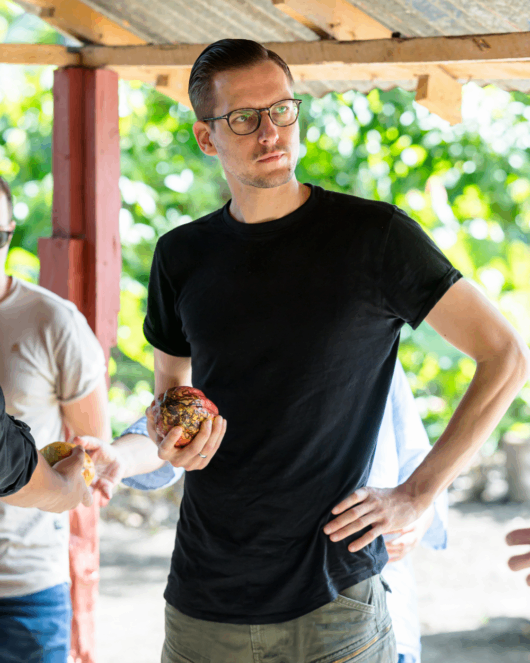
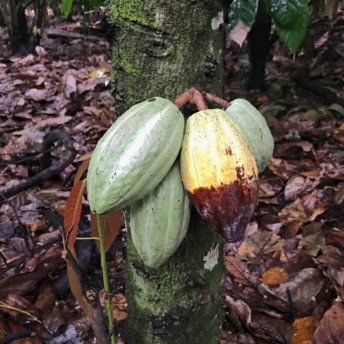
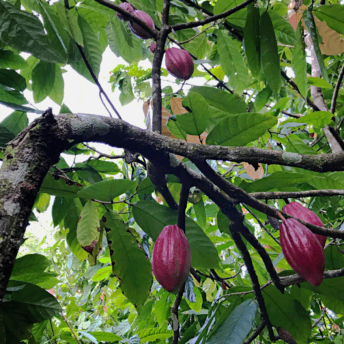
Impact on Chocolate Pricing
The ripple effects of the cocoa price surge are inevitably felt in the consumer market. Chocolate, universally beloved, is becoming a luxury as prices climb. VIVANI, like many small producers, finds itself in a precarious position, forced to increase prices despite wishing to maintain accessibility for chocolate lovers. The Managing Director of ViVani, Gerrit Wiezoreck, has spoken candidly about these challenges, noting that price increases are not just likely but necessary.
A Global Shift in Cocoa Production
The long-term outlook suggests a shift in cocoa production from West Africa to regions like Ecuador, expected to become the second-largest cocoa producer by 2027 due to its more sustainable cultivation practices and lesser impact from illegal activities. This geographical shift in production bases could reshape the global cocoa supply landscape significantly.
Looking Forward
The 2024 cocoa crisis is a complex issue intertwined with environmental, economic, and social factors. It highlights the need for sustainable farming practices, ethical sourcing, and greater resilience in agricultural planning. As ViVani continues to monitor this situation, it is clear that both immediate and long-term solutions are needed to stabilize the market and ensure the sustainability of chocolate production worldwide.
Stay tuned to our beauty news section in ViVani for further updates and in-depth news!
Sources
https://www.boerse-frankfurt.de/rohstoff/kakaopreis
https://www.tagesschau.de/wirtschaft/weltwirtschaft/kakaoernte-elfenbeinkueste-100.html
https://www.n-tv.de/mediathek/bilderserien/panorama/Warum-sich-die-Kakaokrise-in-Ghana-verschaerft-article24859548.html
https://www.boerse-frankfurt.de/rohstoff/kakaopreis/charts


















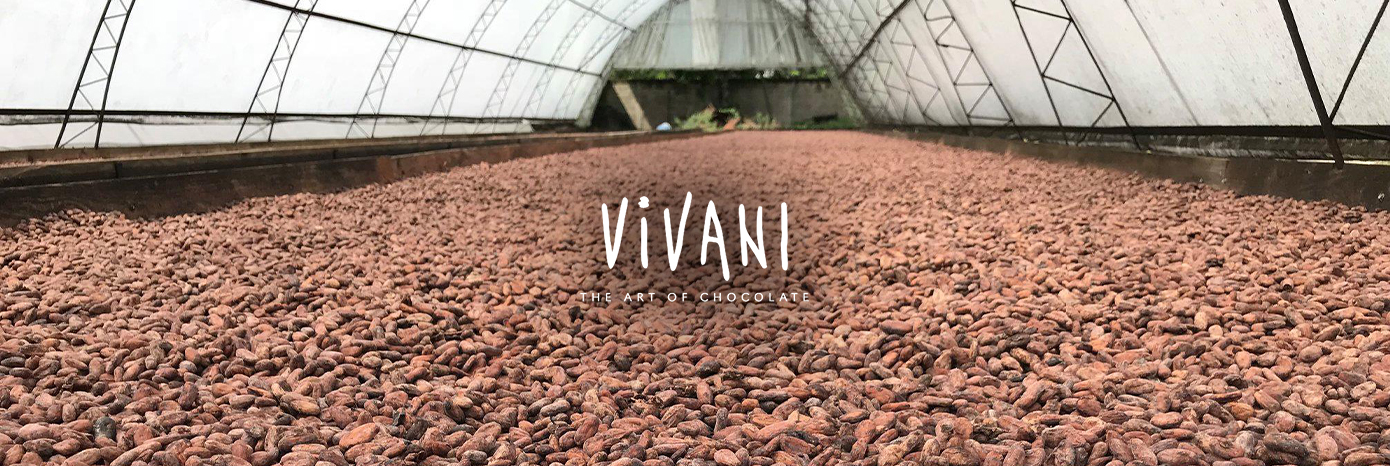












 Beauty Products
Beauty Products By Skintype
By Skintype Brands A-Z
Brands A-Z Wellness
Wellness Health / Nutrition
Health / Nutrition